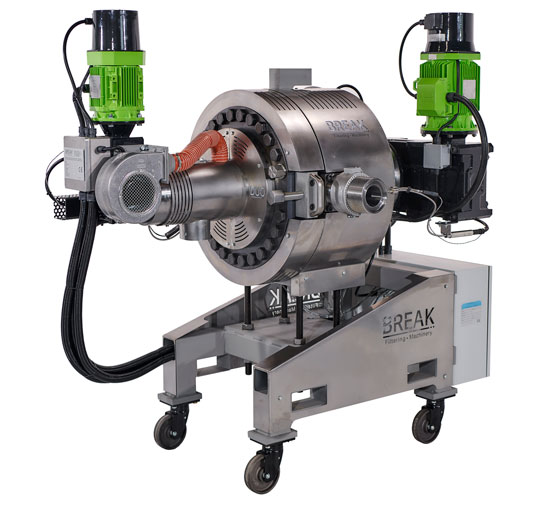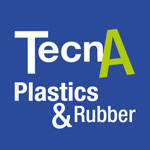 A new approach for a greener future
A new approach for a greener future
Break Machinery was born in 2019 from an insight of the Pegoraro family, who, since the early 1970s, has dedicated itself to the collection and regeneration of plastic waste with a genuine pioneering spirit, acquiring over the years an expertise of excellence in the recycling and moulding of regenerated plastic materials. This gives concrete form to the concept of circular economy and environmental sustainability, values that continuously inspire the Group’s entrepreneurial activity over time.
After BREAK ONE, the first screen changer presented by the company, met with great success on the national and international markets, Break’s Research & Development team engineered new filtration technologies that led to the design of BREAK DUO, a newly conceived screen changer based on an innovative filtering system.
 BREAK DUO presents a double filter system that perfectly combines maximum productivity with high end-product quality.
BREAK DUO presents a double filter system that perfectly combines maximum productivity with high end-product quality.
The new patented rotating scraper disc is capable of removing multiple types of contamination (paper, wood, copper, aluminium, etc.).
It is characterised by an innovative geometry with interchangeable blades placed on both sides (3+3) of the scraper disc, which allow contamination to be simultaneously removed from two different opposing filtering surfaces, and conveyed to the centre to be ejected.
The ejection system operates via a single independently rotating discharge screw located in the centre of the scraper disc.
The operating speeds of the discharge screw and the scraper disc are adjustable according to requirements: this allows for a significant reduction in rejects and continuous operation, maintaining constant pressure and maximising production.
With a view to optimising working time, filter replacement becomes more flexible and faster: there is no need to remove machine parts such as breakers or the discharge screw. Filter opening, cleaning and replacement time is therefore extremely reduced.
BREAK DUO is suitable for processing many types of plastic: PP, LDPE, HDPE, PS, ABS, etc.
The machine is equipped with an electric panel and sensors, which allow total control of the various functions and ensure an optimal management.
Scraping Operating Mode
The melted plastic material (1) is conveyed into the filtration chamber (2) and passes through two laser filters (3) opposed to each other.
Between the two filters is a scraper disc (4) with interchangeable blades, which rotates to remove the contamination deposited on the filters, channelling it into the disc itself (5).
The centre of the scraper disc is in communication with an independent discharge screw (6) that expels the contaminated material.
The melted plastic material filtered (7) from the two filters then re-joins the outlet channel (8) to pass on to the next process.
During Plast 2023, the Italian company will present two upgrades developed on DUO.
Automatic opening
DUO is also available in a version with an automatic opening system designed to make lid opening and closing operations easier, faster and safer. The presence of the operator is limited to a control function.
This system consists of a threaded lid that screws directly onto the machine body, and a motor that controls its movement.
Backflushing system
This second option further reduces consumable costs. It is no longer necessary to use laser filters, but wire cloths with the required degree of filtration are used.
Each machine can switch from scraping mode to counterflow mode changing the internal component kit, that includes a cleaner and two protective breakers.
Backflushing Operating Mode
The melted plastic material (1) is conveyed into the filtration chamber (2) and passes through two wire meshes (3) facing each other, both positioned between two breakers: a support (4) and a protection (5).
Supporting the two protective breakers is a cleaner (6) that sucks up the contamination deposited on the wire mesh.
The centre of the cleaner is in communication with an independent discharge screw (7) that expels the contaminated material in a controlled manner.
The melted plastic material filtered (8) by the two filters then rejoins the outlet channel (9) to pass on to the next process.






